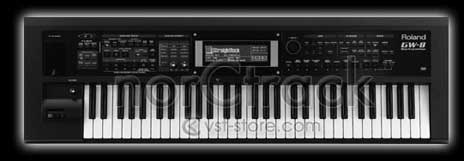Roland Gw 8 Styles Free Download

Ok here's how. It's very simple just connect your pen drive or disket to your arranger then go to UTILITY and select EXPORT and then STYLE,and then select the style you want to export (eg.Latinjazz) Gw8 message will show then just click enter and wait till it's finish. A ROLAND folder will be added to your pen drive or disket. Take off your pen drive and connect it to another arranger then after loading it's just the same procedure. Go to UTILITY, this time select IMPORT then STYLE, GW8 message click enter and it will load your new style on you USER section of your arranger. This way we all can share different styles from Latin,European,Chinese, and Asian collections.You can also do this with the style from Roland E80,G70 EXR and many more. Believe me that's what I do!:D Posts: 4 Joined: 18:47, 25 October 2009.
GW-8 Version 2 ReleaseNote. The new, free Version 2 GW-8 operating system software is a big update for the GW-8, adding lots of new features. With Version 2, the GW-8 is even more fun to use, and downright powerful as a style-making workstation. We've prepared a new GW-8 Operating System Version 2.00 ReleaseNote booklet to help you get the most. Find great deals on eBay for roland gw 8. Shop with confidence. 4500 Styles For Roland Keyboards (Select) download or USB stick. Free local pickup.
The bright, jangling tones of an acoustic guitar fit in with almost any instrument, sound beautiful on their own and are a perfect accompaniment for the human voice. But where did it come from, and how do you know which is right for you? Musician's Friend has a wide assortment from the biggest acoustic guitar makers around as well as smaller, more niche brands. We've got everything from affordable entry-level starter packs for younger players to highly detailed one-off guitars for gigging professionals and collectors.
A Brief History of the Acoustic Guitar You may be surprised to know the acoustic guitar's roots go back to Ancient Egyptian. A lute was a hollow-bodied wood instrument with multiple strings attached to a soundboard via a thin piece of wood (the bridge). The strings were stretched in a parallel fashion across a soundhole, and wound taut to a peg or post (tuners) atop the neck. The tension of each string was adjusted to create a pattern of frequencies familiar to those who played it. The lute had a teardrop-shaped soundboard, bowl-shaped body and a sharp bend in the neck. A lutist, much like today's guitarist, strummed or plucked the strings with their fingers or a plectrum (what we call a pick). The sound produced was created by the air being moved around the string vibrations, the vibrations coming off the soundboard, and the air resonating back out from the body chamber through a soundhole.

Fingers on the 'neck' hand change the pitch of a string by pressing it firmly against specific spots along the neck top (fingerboard). Though the lute was used through the Baroque era, the inspiration for the name 'guitar' showed up back in 13th century Western Europe with the 'gittern.' Similar in design to the lute, its body was carved out of a single piece of wood and had a smooth or straight neck joint. In the 15th century, Spain introduced the vihuela, a flat-backed, peanut-shaped design with a less pronounced neck bend and pairs of strings tuned in unison. Roughly 350 years later, Spanish-born guitar maker Antonio Torres Jurado created a larger body design and introduced fan bracing for internal reinforcement.
This made what we now call the nylon-string, Spanish or classical guitar, louder with better projection and a cleaner tone. In 1916, C.F. Martin & Company developed the square-shoulder dreadnought acoustic guitar. Named for the large battleships of the time, it was wider, deeper and yielded more volume, with a rich, well-rounded tone. Popular with the folk and bluegrass guitarists of the time, it is still the best-selling acoustic guitar shape today. Drawn together torrent legendado sample.